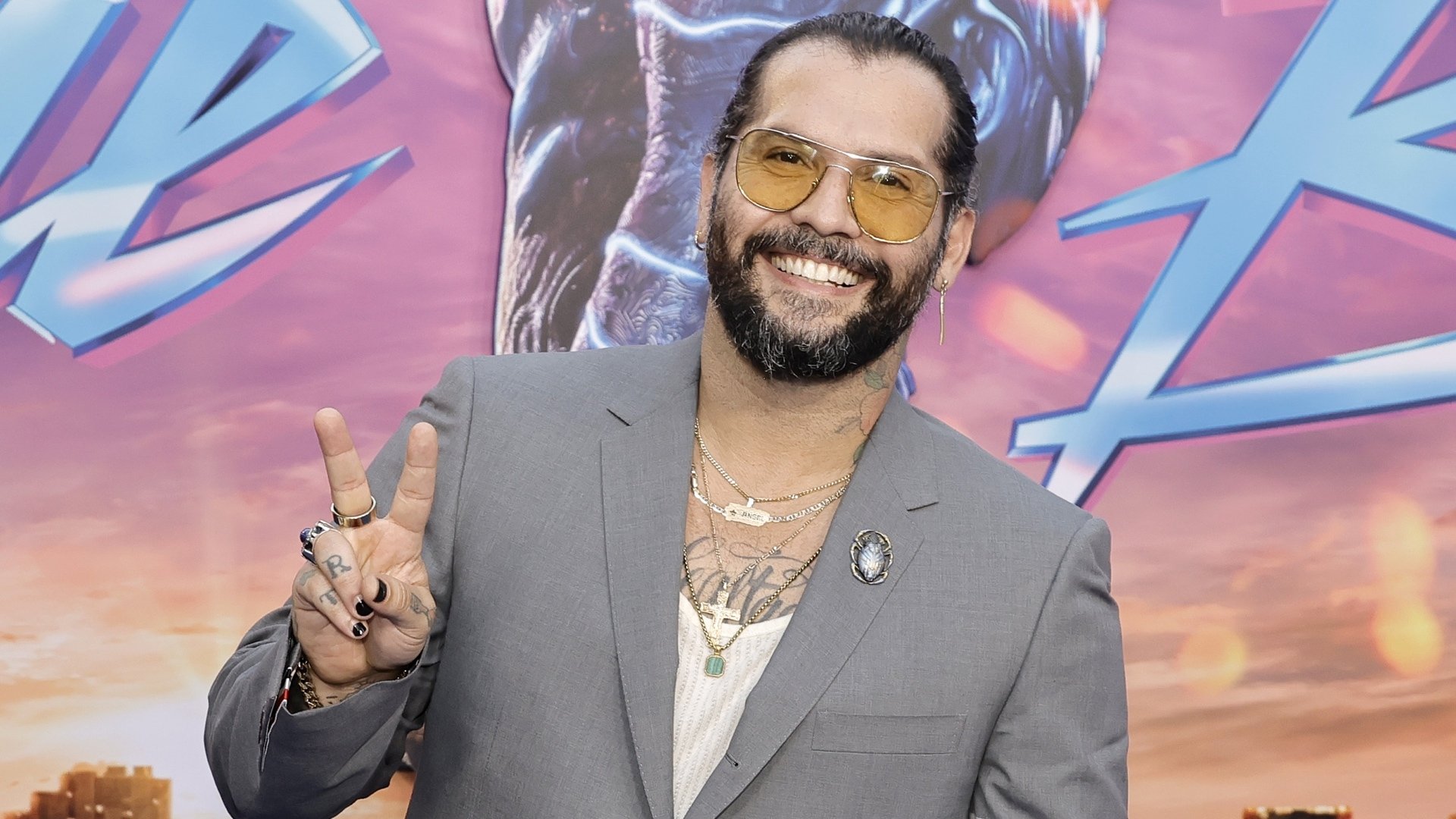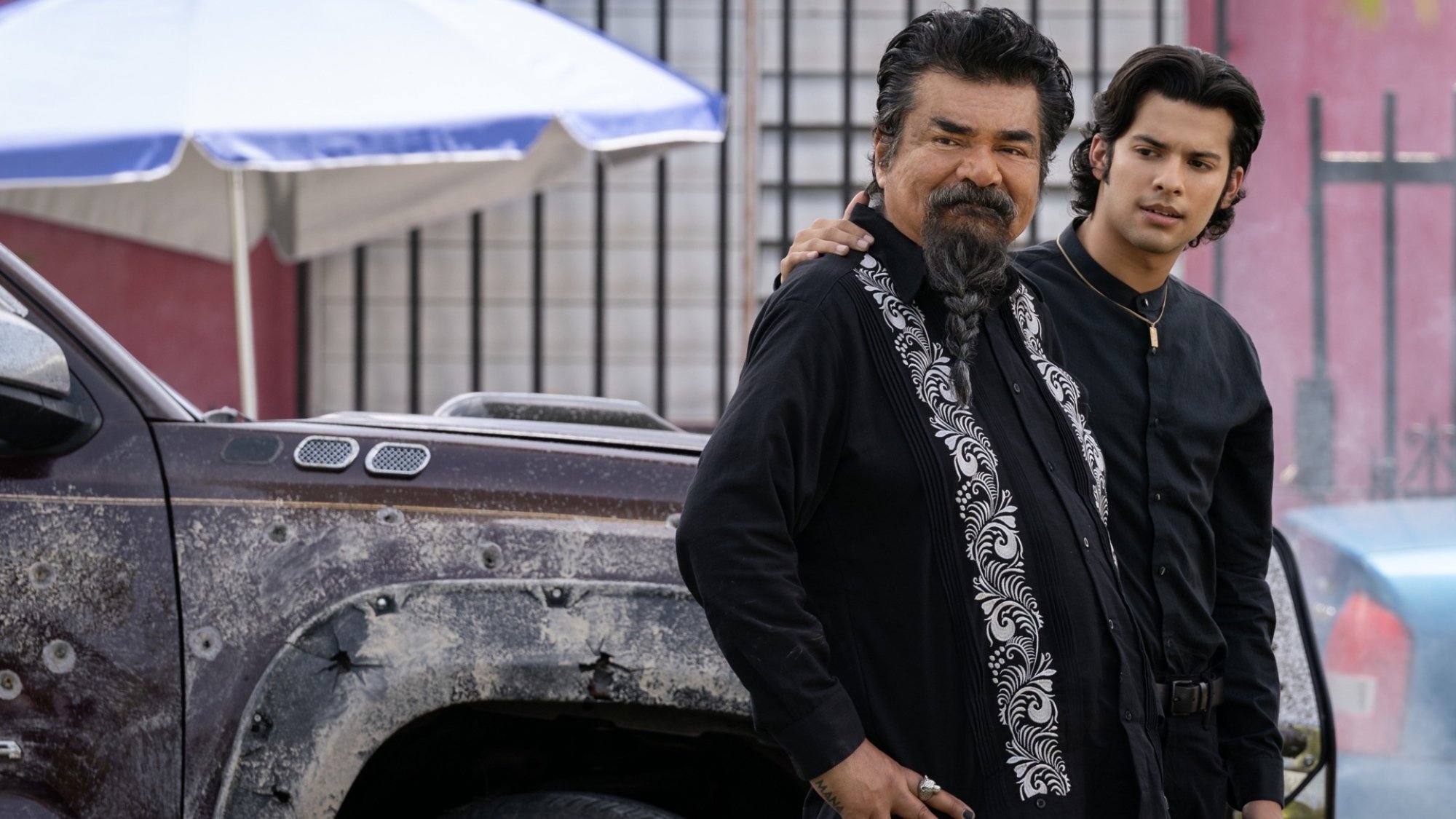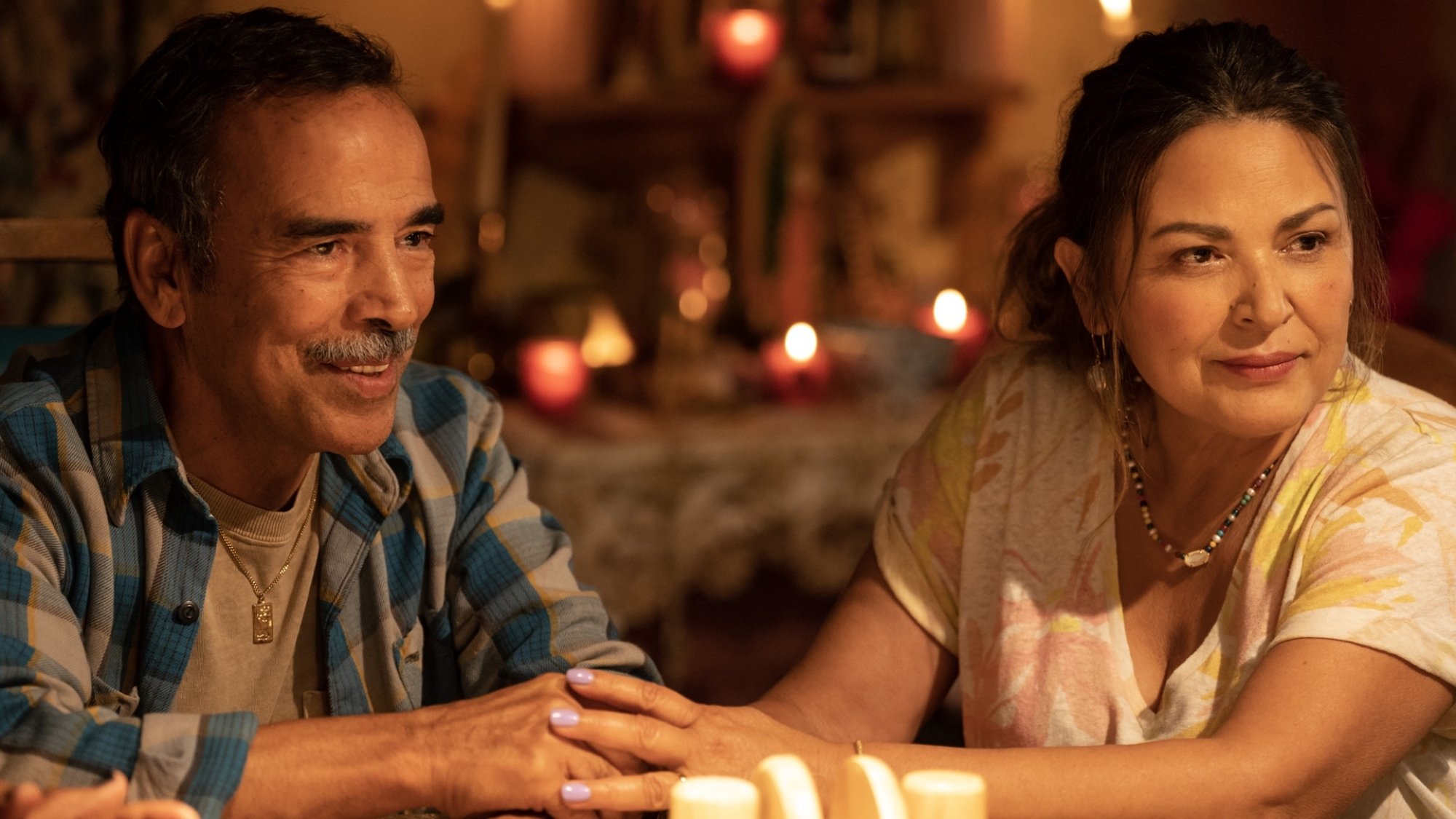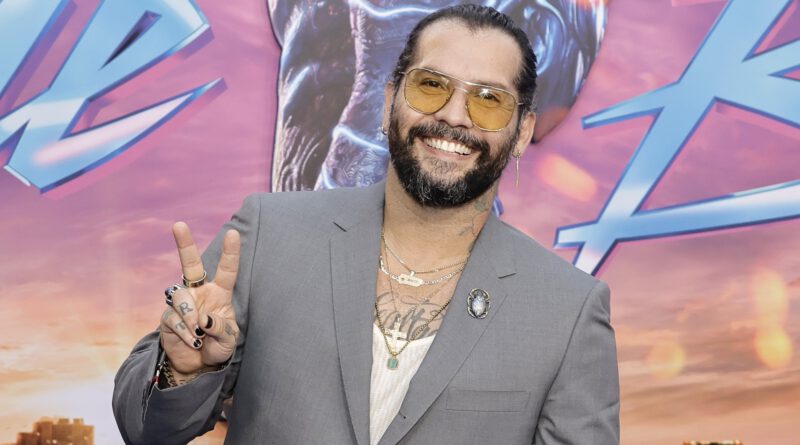‘Blue Beetle’ director Angel Manuel Soto celebrates Latine culture by putting it front and center

The new cinematic adaptation of DC’s Blue Beetle is making history. After decades of superhero movies, Blue Beetle is the first live-action standalone film where both the lead character and the actor who plays him are Latine, as are the majority of the supporting cast and the creative talent behind the camera.
Puerto Rican director Angel Manuel Soto (Charm City Kings) and Mexican writer Gareth Dunnet-Alcocer (Miss Bala) have packed Blue Beetle with love and affection for Latine culture. It’s felt in every old-school Spanish language TV reference and Mexican pop song, in untranslated terms of affection and a deeply familiar backstory. Simply put, there’s no ignoring us in this film.
Almost immediately, Blue Beetle begins with a family reunion. Jaime Reyes (Xolo Maridueña) returns home from college to many excited hugs and kisses on cheeks from his family – his skeptical sister Milagro (Belissa Escobedo), his wise papa Alberto (Damián Alcázar), doting mama Rocio (Elpidia Carrillo), adoring Nana (Adriana Barraza), and eccentric Uncle Rudy (George Lopez), who maybe spends too much time online reading conspiracy theories and making his own inventions. Over the course of the movie, Blue Beetle becomes a family affair, with each member playing an important role in Jaime’s heroic journey.
In an interview with Mashable, Soto shared how he incorporated beloved Latine cultural references from the entertainment grew up with and his own family.
Soto was thrilled at the chance to develop the Reyes family for the big screen, and he recognized the significance of making a Latine character the hero of his own story. “We didn’t want to miss the opportunity when we were doing this film – [not only are] the characters in the movie are Latino, these actors are playing versions of themselves,” Soto said. “I felt like a lot of our stories have never given us the opportunity to tell how we got to the place where we are. We’re so used to being a stereotype without giving us the opportunity to defend ourselves.”
The characters in Blue Beetle have rich backstories rooted in the Latine experience.

That approach extends to Blue Beetle‘s villain, Carapax (Raoul Max Trujillo), who gets his own backstory rooted in the United State’s bloody interventions in Central America and the infamous School of the Americas, a place notorious for training military leaders and dictators in Latin America. “I wanted to explore the reasons why some people might become villains, especially when they’re not born that way,” Soto said. “It is easy to forget about the past and focus on the present, especially when it comes to Latinos.”
Another aspect of the film that was drawn from the creative team’s lived experience is the Reyes’ many references to other shows and movies Latine audiences may recognize. For example, when Jaime develops a crush on the heir to the multinational Kord Industries, Jenny Kord (Bruna Marquezine), his family teases him that he’s like the poor lead character in the telenovela María la del Barrio, which his Nana watches in the movie.
Soto said that kind of inclusion came naturally to his team. “‘What did our grandmother watch?'” he asked them. “We just went through flipping channels in our heads, and of course, Sábado Gigante was always on, or María la del Barrio, or El Chapulín Colorado. I couldn’t miss it.” Soto also references movies like Guillermo del Toro’s Cronos and Roberto Gavaldón’s Macario, the classic Mexican horror film that he said introduced him to magical realism. “We really wanted to [pay tribute] to the people that came before us the same way that the movie celebrates our families and their journeys,” he said.
Language plays a pivotal role in Blue Beetle‘s story.

In between dramatic super-powered fight scenes and tense chase sequences, the calmer moments of a shared family dinner feel realistic as Milagro relentlessly teases Jaime, Rocio worries about her son, and Uncle Rudy rants about one government conspiracy or another. They alternate smoothly between Spanish and English, with Jaime and Milagro more comfortable speaking in English while Nana mostly uses Spanish, echoing the dynamic of many multigenerational immigrant households.
Soto said he made the conscious choice not to translate every single word they speak but made sure the sentiment is felt every time someone in Jaime’s family calls him “flaco” or “mijo.” “If you translate everything when you speak Spanish, then people start getting distracted,” Soto said. “Some stuff doesn’t need translation, because they’re more on the emotional side of things.”
“That’s what happens when we are able to be our authentic selves.”
Soto worked on the film’s bilingual soundtrack to reflect its characters, creating an eclectic playlist of ’80s Mexican pop music, modern day reggaeton, and even some classic hair metal music by way of Mötley Crüe. “Music is something that has connected Latinos, all around the world, no matter the boundaries, no matter the distance,” said Soto. “Everybody in Latin America has heard of Luis Miguel, or everybody has danced to a reggaeton. Or even if you weren’t into any of those songs, you had to have heard of Violeta Parra and ‘Gracias a la Vida’ or dance to Soda Stereo.”
“You have Latinos playing Latinos in a film written by a Latino and directed by [a] Latino, you have the freedom to be yourself,” said Soto. “That’s what happens when we are able to be our authentic selves.”
